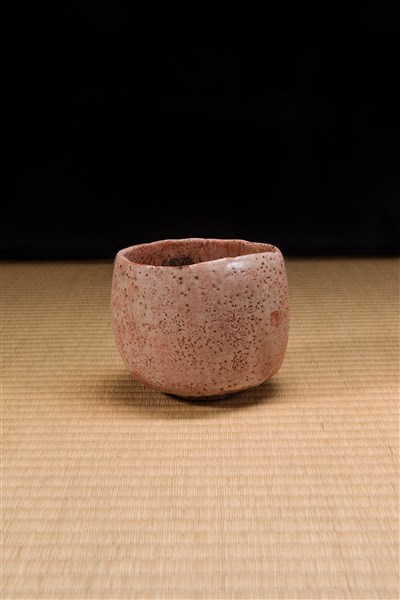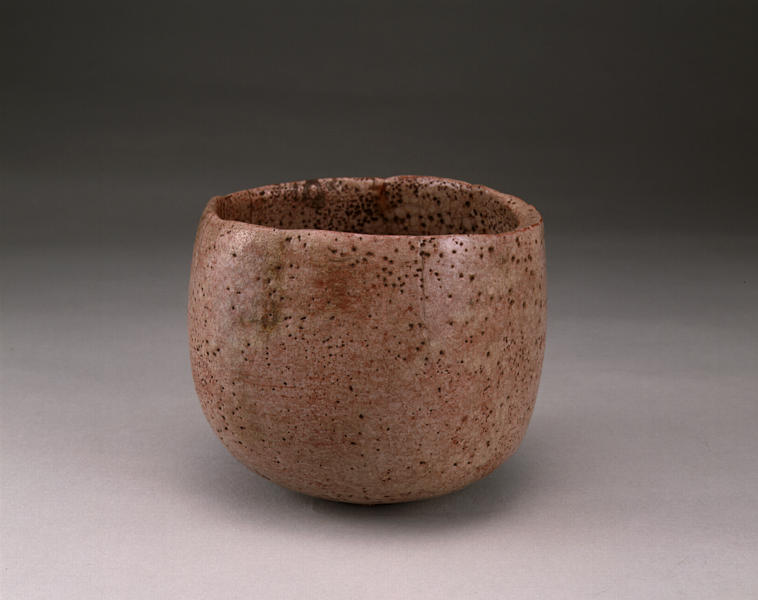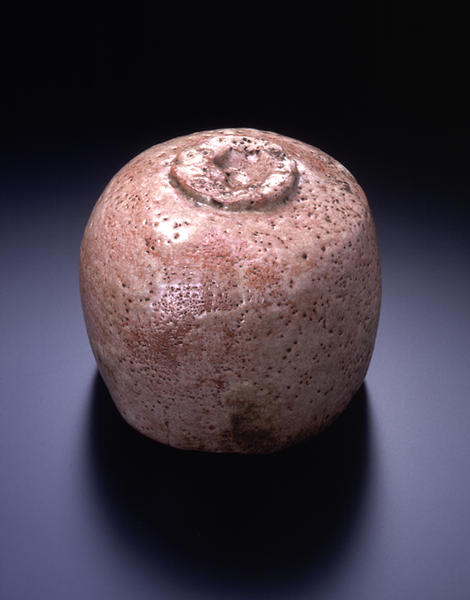Red Raku Teabowl, by Hon'ami Kōetsu
- Kyoto
- Edo period
- 17th century
- Red Raku ware
- H-10.3 D-12
Catalogue Entry
Hon'nami Koetsu (1558‐1637) was born into a family of sword sharpeners, and thus was raised as a member of the highest ranking commoners in Kyoto. He was also an accomplished calligrapher, known as one of the Three Brushes of the Kan'ei era. He was an accomplished master of the tea ceremony and his skill at pottery is attested by the many superb works remaining by his hand. Koetsu did not start making ceramics until he was over 60 years in age, and his 1615 receipt of lands in Takagamine granted to him by the shogun Tokugawa Ieyasu. He was trained in ceramics by his close friend Kichizaemon Jokei, the second generation head of the Raku pottery family, and Kichizaemon's son, Kichibei (the 3rd generation head also known by his art names of Donyu and Nonko). They assisted Koetsu with his pottery making as documented in many letters written by Koetsu on this matter. Koetsu's tea‐bowls reveal his immediate desires for each bowl, with his handbuilding tweaking them into distinctive forms. Each fully expresses Koetsu's own personal sense of aesthetics.
Koetsu's tea bowls can be largely divided into two types. The first is a white glazed, cut cylinder form, as exemplified by Fujisan. The other is a red glazed bowl type with a rounded torso, as seen in Otogoze and Seppo. In recent years, approximately 30 bowls have been confirmed as by Koetsu, and there are also a number of bowls being considered in this regard. This bowl has previously not been known to the general public.
The mouth of this bowl has the standard five raised areas common to many tea bowls and is slightly turned in, while the torso swells to the base. Part of the mouth has been sharply trimmed, while a facet was added to the body by a sharp spatula scraping on one side of the lower torso. The interior of the bowl is broad, without a depression for tea‐pooling. The foot is an irregular circle in shape and the interior of the foot has been scraped out. There are several adhesions on the base of the foot. Red clay was used in the body of the bowl and the entire form was coated in white glaze, which then developed countless large and small bubbles in the firing. With the exception of the overall color developed here, this bowl is very close to Bishamon‐do in construction and style. The box inscription “Koetsu" was written by Hon'nami Koho.


